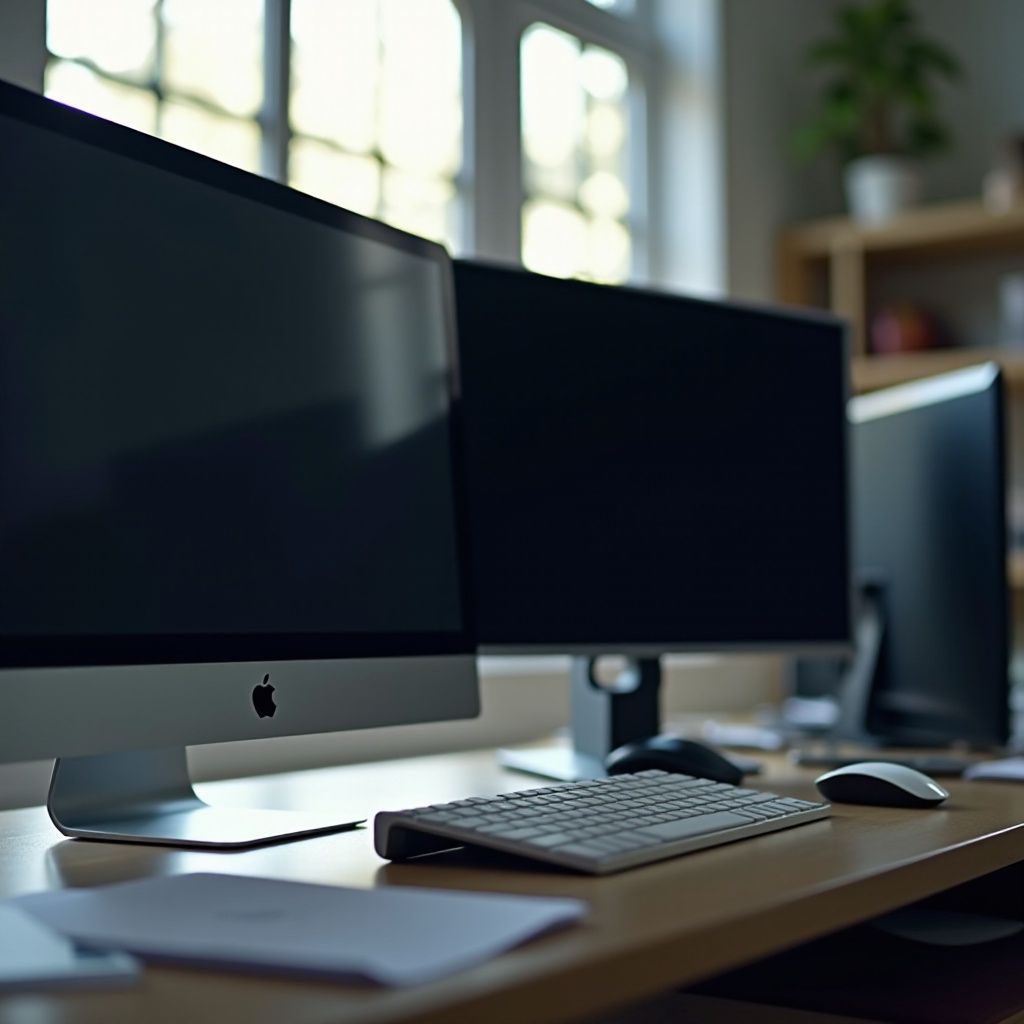Introduction
The frustration of your PC monitor going black unexpectedly can interrupt your workflow and cause unwarranted stress. Whether it’s the middle of a work project, video call, or online game, deciphering why your monitor goes dark is crucial. Not knowing the reasons behind this issue or how to solve it can leave you with a sense of helplessness. This blog will guide you through understanding, troubleshooting, and solving the problem of a monitor that keeps going black, making sure your device returns to its optimal performance level.

Understanding the Issue
Common Symptoms of a Black Screen
When your monitor goes black, you may notice various symptoms. The black screen might occur intermittently or stay black entirely. In some cases, error messages may appear before the screen turns black, while at other times, there may be no warning at all. Occasionally, you may still hear the computer running in the background, indicating that the issue is isolated to the monitor.
Reasons Behind a Monitor Going Black
Several factors could cause your monitor to go black, ranging from simple connection issues to complex hardware malfunctions. Common reasons include loose power or video cables, outdated video drivers, improper power or display settings, hardware failures like a malfunctioning graphics card or power supply, and possible damages to the monitor itself. Understanding these potential causes is the first step to diagnosing and fixing the problem, leading to a more stable and reliable system.

Checking Hardware Connections
To ensure you are covering all bases, start with examining your hardware connections. This will rule out any basic connectivity issues before moving on to more complex fixes.
Inspecting the Power Cable
Start by checking the power cable connected to your monitor. Ensure the cable is securely plugged into both the monitor and the power outlet. Look for any visible damage, such as fraying or bending in the cable, which might impede the power supply. If possible, use a different power cable to see if the black screen issue persists.
Verifying the Video Cable Connections
Next, inspect the video cable connecting your monitor to the PC. Loose or damaged video cables are often the culprits behind a black screen. Ensure the cable (HDMI, VGA, DisplayPort, etc.) is securely connected to both the monitor and the PC. Replace the video cable with a new or known working one to rule out the possibility of a faulty cable.
Examining the Monitor for Physical Damage
Physical damage to the monitor can also cause the screen to go black. Examine the monitor for any signs of physical damage, such as cracks or dents. If the monitor is damaged, it may need to be repaired or replaced. In case there’s no visible damage, performing a detailed inspection could help identify any internal issues that might be causing the problem.
System and Software Checks
Once you have ensured that all cables and hardware are in good condition, the next step is to look into system and software settings.
Updating Video Drivers
Outdated or corrupted video drivers can lead to display issues, including a black screen. Regularly updating your video drivers ensures that your graphics card functions correctly with the latest software enhancements. To update your video drivers, go to the device manager, find your display adapter, right-click, and select ‘Update driver’.
Resolving Power Settings Issues
Improper power settings can force your monitor to go black. In Windows, access the Power Options via your Control Panel. Ensure that neither your monitor nor hard drive is set to turn off after a brief period of inactivity. Adjusting these settings can prevent your monitor from unintentionally turning off and enhance the overall efficiency of your power usage.
Fixing Display Settings Problems
Incorrect display settings can cause a monitor to go black as well. Ensure the correct resolution and refresh rate settings are configured based on the capabilities of your monitor. In your system settings, go to the display settings, and select the recommended resolution and refresh rate. If multiple monitors are connected, ensure the correct display is set to your primary monitor.
Advanced Troubleshooting
If you have tried the above solutions and the problem persists, it may be time to move on to advanced troubleshooting methods.
Testing the Monitor with a Different PC
One way to determine if the problem lies with your monitor or the PC is to connect the monitor to another computer. If the monitor works correctly with another PC, then the issue likely resides with your original PC, and not the monitor itself.
Troubleshooting the Graphics Card
The graphics card within your PC could be experiencing issues. Ensure the card is firmly seated in its slot on the motherboard. Overheating can also cause graphical malfunctions, so make sure the graphics card is not overheating by checking the internal temperatures. Updating the graphics drivers or testing with a different graphics card can help isolate the problem.
Identifying Power Supply Issues
An underperforming power supply can hinder the ability of the monitor and other components to function correctly. Check if your power supply unit (PSU) provides adequate power to your system. If the PSU is insufficient, it might cause the monitor to go black when the system demands more power. Consider upgrading to a higher wattage PSU if necessary.

Conclusion
Diagnosing and fixing a monitor that keeps going black involves various steps, from checking simple cable connections to performing advanced hardware troubleshooting. By methodically approaching each potential cause, you can effectively identify and solve the problem, ensuring a stable and uninterrupted computing experience.
Frequently Asked Questions
Why does my monitor keep going black during gaming?
A monitor may go black during gaming due to overheating, high power usage, or demanding graphics settings surpassing the capacity of your GPU. Ensure proper cooling and compatible settings.
Can a faulty power cable cause my monitor to go black?
Yes, a faulty power cable can interrupt the power supply to your monitor, causing it to go black. Check for any visible damage and try using a different cable to see if the issue persists.
How can I prevent my monitor from going black in the future?
Regular maintenance, including updating drivers, securing cable connections, adjusting power settings, and ensuring adequate cooling, can help prevent your monitor from going black.